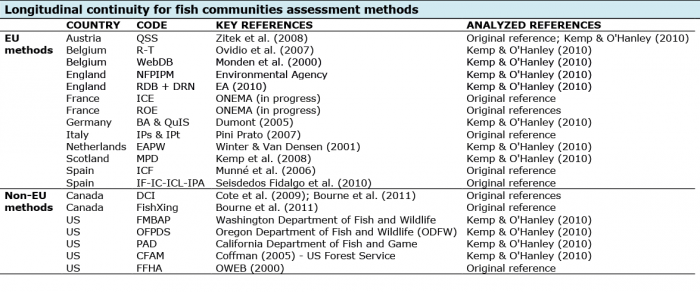Fish longitudinal continuity assessment
Fish longitudinal continuity assessment
Type
Hydromorphological assessment methods
Brief description
Methods for fish longitudinal continuity assessment aim to assess the impact that cross-sectional structures (i.e. barriers) have on the movement and migration of fish communities. While early methods simply aim to obtain a database inventory of the location of barriers, more recent methods also attempt to assess the passability of barriers (mainly at the single barrier scale) both in terms of their structural characteristics and of the biological capacities of fish communities to pass them (e.g. swimming/jumping abilities, life history). We reviewed 20 methods in total (13 for European countries and 7 for non-European countries) (Table 1).
Strengths, limitations and gaps
Methods for longitudinal continuity assessment mainly consists of an inventory of features or on an assessment of barrier passability at the single barrier scale, rather than on the effective assessment of river longitudinal continuity at the catchment scale. Despite recent progress, efforts are still needed to combine small scale assessment and large scale inventories, species biology, spatial/regional environmental diversity and river processes.
Other relevant information
Summary tables of analyzed methods for longitudinal continuity assessement are available here:
- For European countries: File:5 EU.pdf
- For non European countries: File:5 nonEU.pdf
In the table we recorded whether the analyzed method considers or not a specific feature. Three options were considered: presence (tick), absence ( ), and probably assessed (PA), the latter indicating when there is an uncertainty concerning whether the feature is collected and/or when the feature may be indirectly obtained.
Table 1 lists key and analyzed references for methods of longitudnal continuity assessment.
